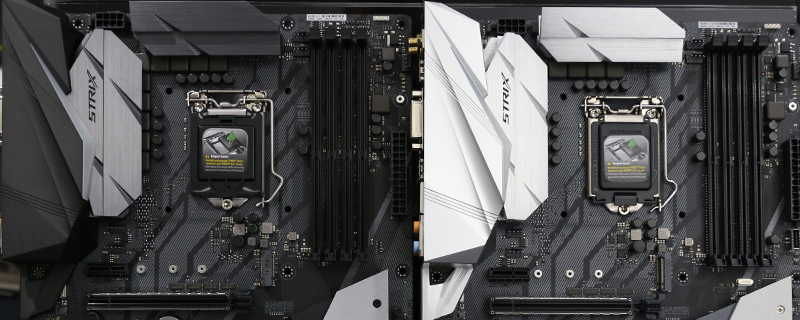ASUS Z370 Strix E and Strix F Review
Conclusion
This is almost a perfect storm of a product. We have long found ASUS products to be high quality with very few issues in even the early samples and great performance throughout the lifespan of the model. Equally we’ve enjoyed the Strix range since it first appeared at the tail end of 2014 and anything released since then hasn’t diminished the sense of excellence you get from anything labelled Strix.
Unfortunately the key word in the above paragraph is ‘almost’.
If we can use some sporting metaphors here it is the equivalent of dribbling around the keeper and then putting it wide. Or doing a Deshaun Jackson and dropping it before you’ve reached the endzone. We’ll cut to the chase. The loadline calibration doesn’t work. At all.
For those of you unaware, loadline calibration is one of those vital tools that has been part of motherboards for almost as long as we can remember. It helps ensure that the voltage you see in the BIOS is the one that appears on the CPU. Whether under loading or idling it saves you from voltage droop. This is hugely important. If a voltage is shown as, for example, 1.3v in the BIOS and you know that’s the limit of your particular CPU then you can safely use it. However, if there is some voltage droop under loading it might drop down to 1.25v or similar, so your overclock would fail. You could, theoretically although we don’t advise it, make a mental note of that droop and thus put 1.35v into your CPU in the BIOS knowing it will droop to your limit of 1.3v when actually under load. So far so safe. But then when the load is removed it pops back up to 1.35v and starts murdering your CPU. This is where loadline calibration comes in. It stops that happening. What you see is what you get.
So when the Strix LLC was borked on both motherboards we did what we always do in such circumstances and got in touch with ASUS to let them know. They showed no interest at all in fixing the issue. Normally they are extremely helpful and fast at getting new BIOS up that fix the issue. The only correspondence we have had is informing us how the LLC has different levels and how to change it. It was such a generic support desk reply it proved they had not even bothered checking the boards at all. This is made yet worse by the fact we know SI’s have also been reporting the same issue and yet again, there doesn’t seem to be any urgency.
So for the first time in as long as we remember – possibly since the birth of this site – we have to say that we just cannot in good conscience recommend you purchase the Strix E or F in their current state. At all. Any of the other ASUS motherboards are fine, and indeed worthy of purchase, which makes the flaws in this one seem even starker and more frustrating. Nobody wants to run their CPU without the slightest idea of how many volts are pumping through it, which is how things are here. Agonisingly ASUS have demonstrated they know how to sort out LLC because the Maximus X is fine. No issues at all.
Buy something else instead.Â
Discuss your thoughts about the ASUS Z370 Strix E and Strix F on the OC3D Forums.



